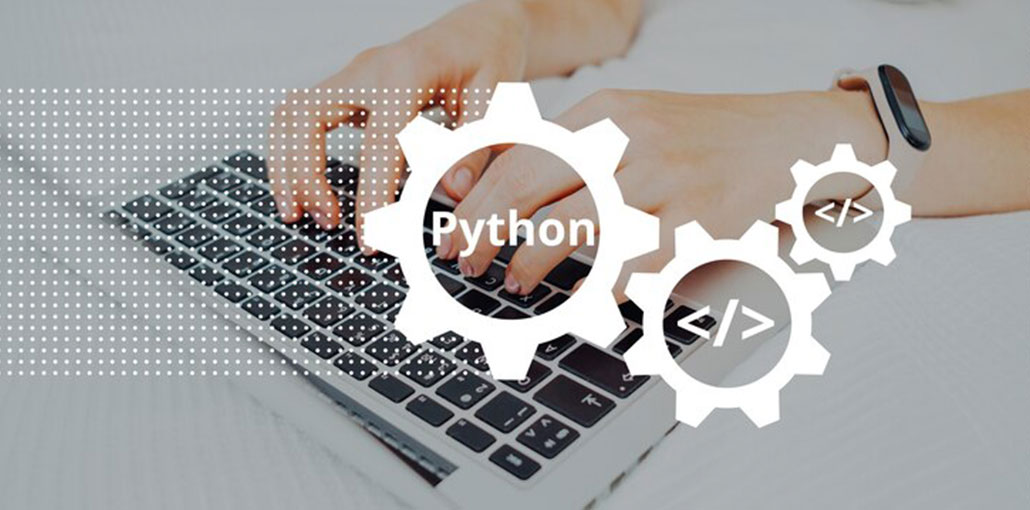The ML industry is growing due to the increased demand for smart products and auto-pilot cars. Machine learning is a powerful tool for cost-cutting in nearly every industry sector. There are many languages that can be used to create ML libraries, but python is the most accessible and user-friendly programming language.
It also has a large developer community. This makes it ideal for machine learning. Many ML libraries are written in Python. The python interface is seamless with C and C++, so any libraries that have been written in C/C++ can easily be extended to Python. This tutorial will discuss the best and most useful machine-learning libraries available in the Python programming language.
Top 10 Python libraries for machine learning
1. TensorFlow
TensorFlow was developed by the Google Brain team to support Deep Learning and Neural Networks. It makes it easy to distribute work across multiple CPU cores and GPU cores. The work can also be distributed to multiple GPUs. TensorFlow uses Tensors to accomplish this.
Tensors are a container that can store N-dimensional data and its linear operations. It is ready for production and supports reinforcement learning with Neural networks. However, the product is not supported by a commercial company. This means that any bugs or defects can only be fixed through community support.
Also read: Best 5 JavaScript Machine Learning Libraries That you Need to Know
2. Numpy
The Numpy was built on top of the older library Numeric and is used to handle complex mathematical functions and multi-dimensional data. Numpy is a powerful computational library that can perform tasks and functions from basic algebra to Fourier transforms, random simulations, and shape manipulations. This library is written using C language which gives it an advantage over standard Python built-in sequencing. In terms of indexing,
Numpy arrays perform better than the pandas series. Numpy also works better when the record count is lower than 50k. Although the NumPy arrays can be loaded onto a single CPU, this can slow down the processing of newer alternatives such as Tensorflow or Dask. However, Numpy is easy to learn and is one of the most widely used libraries for Machine Learning.
3. Natural Language Toolkit (NLTK)
NLTK is the most widely used library for Text Classification (and Natural Language Processing). It can perform word Stemming and Lemmatizing as well as Tokenization. Also, it can search for keywords in documents. You can also use the library to analyze sentiment, understand movie reviews, review food, text-classifier, check and censor vulgarised words from comments, as well as text mining and other human language-related tasks. Its wider use includes AI-powered chatbots that require text processing in order to train their models to recognize and create sentences necessary for machine and human interaction in the future.
4. Pandas
The Python Web framework Library allows for data manipulation of numerical data and time series. It defines three-dimensional data and two-dimensional data using data frames and series. You can also index large data to make it easy to search large databases. It is known for its data reshaping capabilities, pivoting on user-defined axis, handling missing information, merging and joining data, and options for data filtering.
Pandas is extremely useful with large datasets and it’s very fast. When the records exceed 50k, its speed is faster than Numpy. Because it offers interactiveness and speed, it is the best library for data cleaning. It is one of few ML libraries capable of dealing with DateTime without the need for any external libraries. Additionally, it has a minimum code base with python quality. Pandas is a very effective tool for data analysis and ML. It helps with data cleaning, processing, and analysis.
5. Scikit-Learn
Scikit-learn focuses mainly on data modeling concepts such as regression, classification, and clustering. This library was written using Numpy, Scipy, and matplotlib. It is open-source, commercially available, and very easy to use. It is easy to integrate with other ML libraries such as Pandas and Numpy for analysis, and Plotly to plot the data in a graphical format. This allows for visualization and visualization. This library is useful for both supervised and unsupervised learning.
6. Keras
Keras is a Python interface to Tensorflow Library that focuses on AI neural networks. The older versions included other backends such as PlaidMl, Microsoft cognitive platform, Theano, and Microsoft Cognitive Platform. Keras includes standard blocks of neural networks and tools that make text and image processing more efficient and smoother. It also offers re-occurring networks in addition to standard blocks.
7. PyTorch
Pytorch, a Facebook-developed ML library, is based upon the Torch Library (an open-source ML library written using Lua Programming language). The Python Web Development and C++ languages are used to create the project. PyTorch also supports extensions in C and C++ languages. Although it competes with Tensorflow, both libraries use tensors. However, it is simpler to learn and integrates better with Python. It supports NLP but its main purpose is to develop and train deep learning models.
8. MlPack
MlPack, a largely C++-based ML Library, has bindings for Python and other languages such as R programming, Julia, or GO. It supports almost all ML models and algorithms, including GMMs, KMMs, least angle regression, Linear, and more. This library was designed to be fast and easy to use. Easy-to-understand, scalable, and a simple-to-use library So that even a new programmer can understand it and use it with ease. It is available under the BSD license, making it both open-source and proprietary software.
Also read: Best Python Libraries for Every Become Python Developer
9. OpenCV
OpenCV is an open-source platform for image processing and computer vision. The library contains more than 2500 algorithms for computer vision and machine learning. It can detect human movements and extract 3d models from moving objects. Then, it stitches images together to create high-resolution images. This is just a small example of AR capabilities. Many governments use it to monitor CCTV cameras, particularly in China and Isreal. OpenCV is used by the largest camera companies around the globe to make their technology more intelligent and user-friendly.
10. Matplotlib
Matplotlib is a Python library that allows for graphical representations of data to help understand it before it is processed and trained for machine learning. It uses the python GUI tools to create graphs and plots with object-oriented APIs. Matplotlib also offers a MATLAB-like interface that allows users to perform similar tasks to MATLAB. This is a free open-source library and includes many extensions interfaces to extend the matplotlib API into other libraries.
Conclusion
This blog will tell you about the top Python libraries for machine learning. Each library has its positives and minuses. These should all be considered before choosing a library for machine learning. After training and testing models, it is also important to verify that the model’s accuracy has been verified.










Leave a comment